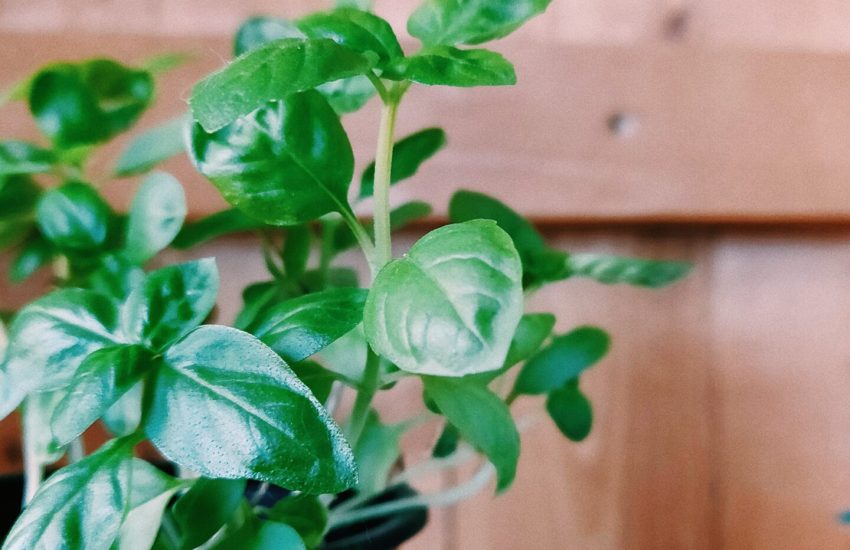Determinate or Indeterminate Roma Tomato: Which One to Choose?
Roma tomatoes are a popular choice among gardeners and farmers for their versatility and flavor. However, when it comes to choosing between determinate and indeterminate varieties, many people are left wondering which is the best option. Determinate and indeterminate tomatoes differ in their growth habits, which can have an impact on how they are grown and harvested.
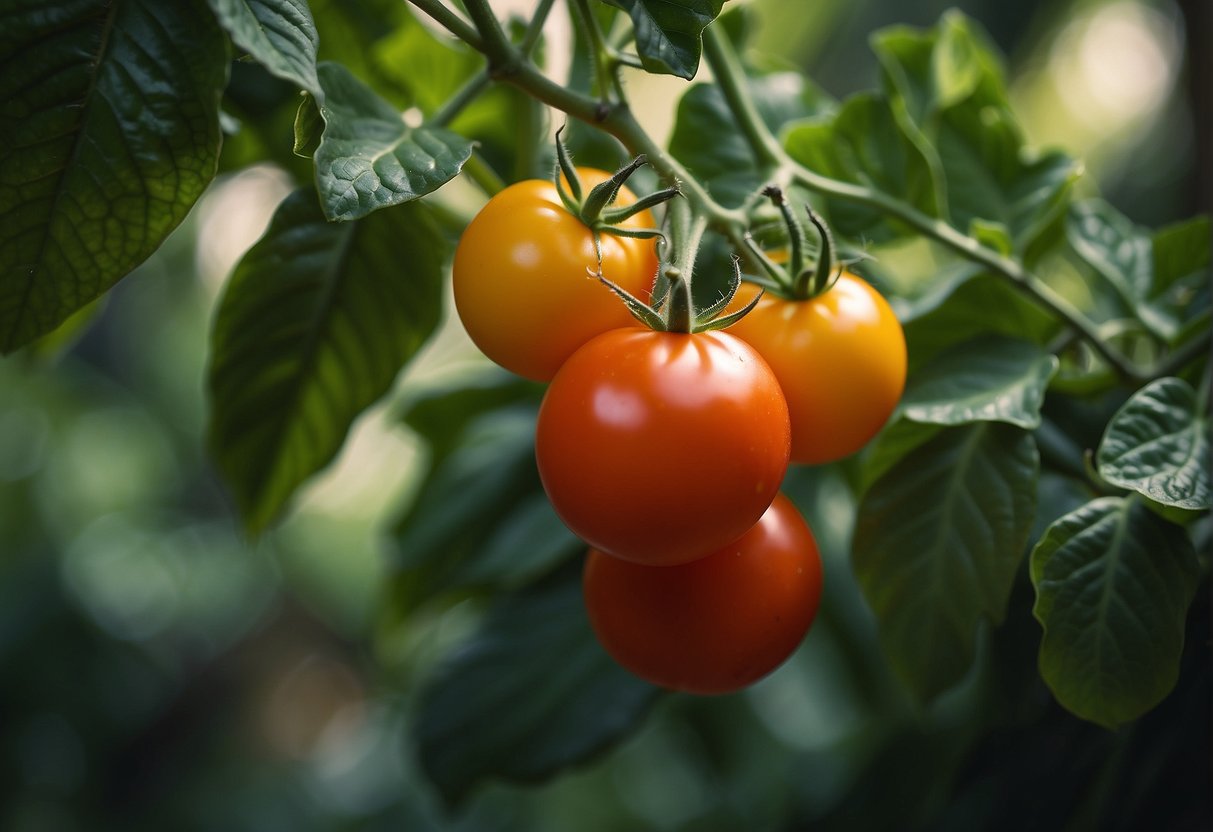
Determinate tomatoes, also known as bush tomatoes, have a more compact growth habit and tend to grow to a predetermined size before setting fruit. This means that they are often grown in cages or staked to keep them upright and supported. Indeterminate tomatoes, on the other hand, continue to grow and produce fruit throughout the growing season, often reaching heights of 6-10 feet or more. This means that they require more extensive support systems, such as trellises or stakes, to keep them from falling over.
Understanding Tomato Types
Defining Determinate and Indeterminate Tomatoes
Tomatoes are classified into two main categories based on their growth habit: determinate and indeterminate. Determinate tomatoes grow to a fixed size and stop growing once the terminal bud has formed. Indeterminate tomatoes, on the other hand, continue to grow and produce fruit throughout the growing season until they are killed by frost.
Determinate tomatoes are also known as bush tomatoes. They are compact and grow to a predetermined size, usually around 3-4 feet tall. They produce fruit in a short period of time, making them ideal for gardeners who want to harvest a large crop all at once. Determinate tomatoes are often used for canning and processing because they ripen all at once.
Indeterminate tomatoes are also known as vine tomatoes. They are tall and continue to grow and produce fruit throughout the growing season. They require staking or caging to support their growth. Indeterminate tomatoes produce fruit over a longer period of time, making them ideal for gardeners who want a continuous supply of fresh tomatoes throughout the season.
Characteristics of Roma Tomato
Roma tomatoes are a determinate variety of tomato. They are also known as plum tomatoes because of their oblong shape and firm texture. Roma tomatoes are popular for use in sauces, pastes, and canning because of their low water content and rich flavor.
Roma tomatoes typically grow to a height of 3-4 feet and produce fruit in a short period of time, making them ideal for gardeners who want to harvest a large crop all at once. They are resistant to cracking and disease, making them a reliable choice for gardeners.
In summary, determinate and indeterminate tomatoes have different growth habits, and gardeners should choose the type that best suits their needs. Roma tomatoes are a popular determinate variety that is ideal for canning and processing because of their low water content and rich flavor.
Cultivation Essentials
Soil Preparation and Requirements
Before planting Roma tomatoes, it’s essential to prepare the soil properly. The soil should be well-draining, nutrient-rich, and have a pH level between 6.0 and 7.0. Adding compost or well-rotted manure can improve soil quality and provide essential nutrients to the plants. It’s also important to ensure that the soil is free from weeds and debris.
Planting Techniques and Timing
Roma tomatoes can be grown from seeds or seedlings. If starting from seeds, it’s best to start them indoors about 6 to 8 weeks before the last frost date. Transplant the seedlings into the garden when the soil temperature reaches 60°F. If using seedlings, plant them in a hole that’s deep enough to cover the stem up to the first set of leaves. Space the plants about 2 to 3 feet apart to allow for adequate air circulation.
Water and Light Considerations
Roma tomatoes require full sun to thrive, so it’s best to plant them in an area that receives at least 6 to 8 hours of direct sunlight daily. Water the plants deeply once a week, or more frequently during hot and dry weather. Avoid getting water on the leaves, as this can lead to fungal diseases. Mulching around the plants can help retain moisture in the soil and prevent weed growth.
Overall, Roma tomatoes are relatively easy to grow, but they do require proper soil preparation, adequate spacing, and regular watering. By following these cultivation essentials, gardeners can enjoy a bountiful harvest of delicious and nutritious tomatoes.
Growth and Support Strategies
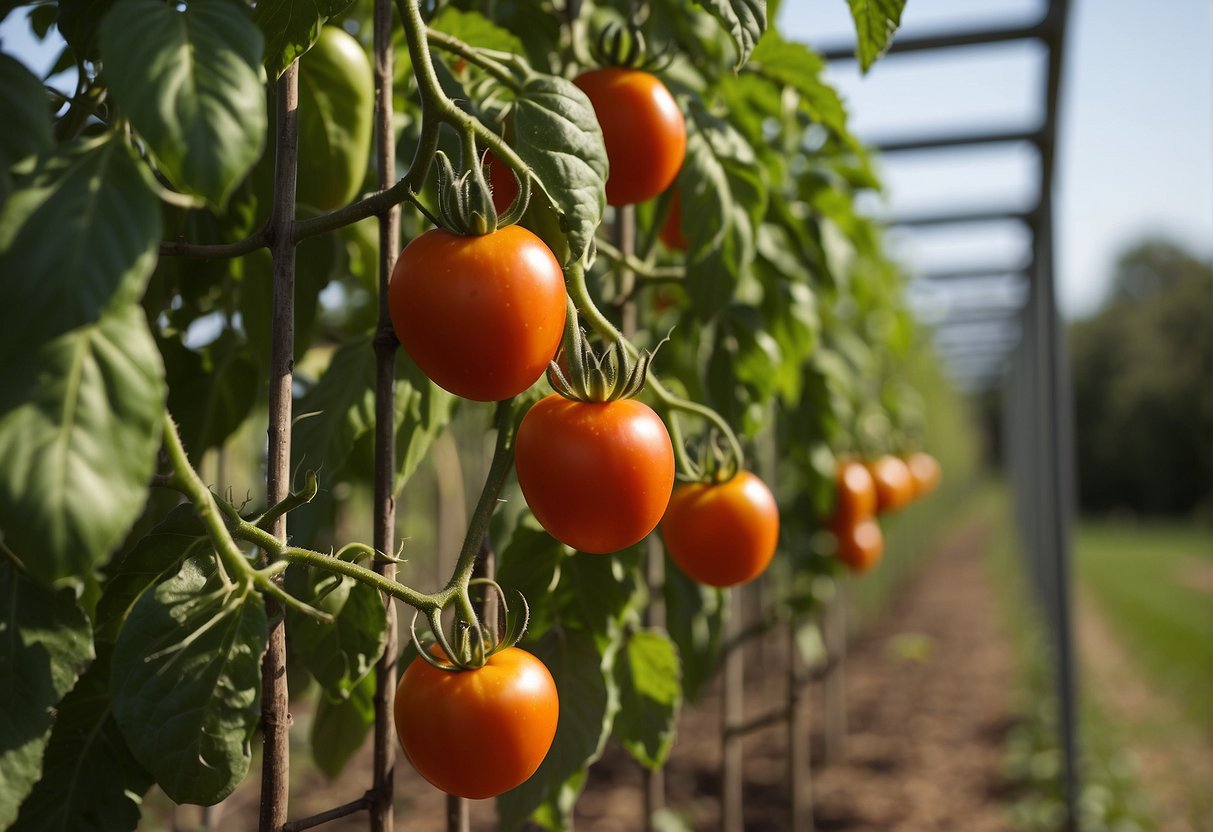
Pruning and Training Tomato Plants
Determining whether a Roma tomato plant is determinate or indeterminate is crucial in deciding the pruning and training strategy for the plant. Determinate varieties have a bush-like growth habit and do not require much pruning. On the other hand, indeterminate varieties have a vining growth habit and require pruning to control their vertical growth and promote fruit production.
For indeterminate Roma tomato plants, pruning involves removing the suckers or side shoots that emerge from the crotch between the stem and the leaf. This helps to direct the plant’s energy towards fruit production and prevents the plant from becoming too bushy. It is recommended to prune the suckers when they are small and tender to avoid damaging the plant.
Support Systems: Cages, Stakes, and Trellises
Supporting Roma tomato plants is essential to prevent the plants from bending or breaking due to the weight of the fruit. Cages, stakes, and trellises are commonly used support systems.
Cages are ideal for determinate Roma tomato plants as they provide support to the bush-like plants. The cages also help to keep the fruit off the ground, reducing the risk of rot and disease.
Stakes and trellises are recommended for indeterminate Roma tomato plants. Staking involves tying the main stem of the plant to a wooden or metal stake, which provides support and helps to control the plant’s vertical growth. Trellising involves tying the main stem of the plant to a wire or string that is suspended between two posts. This method allows the plant to grow vertically, saving space and making it easier to harvest the fruit.
In conclusion, understanding the growth habit of Roma tomato plants is crucial in developing an effective pruning and training strategy. Additionally, providing adequate support to the plants is important to ensure a bountiful harvest.
Pest Management and Disease Prevention
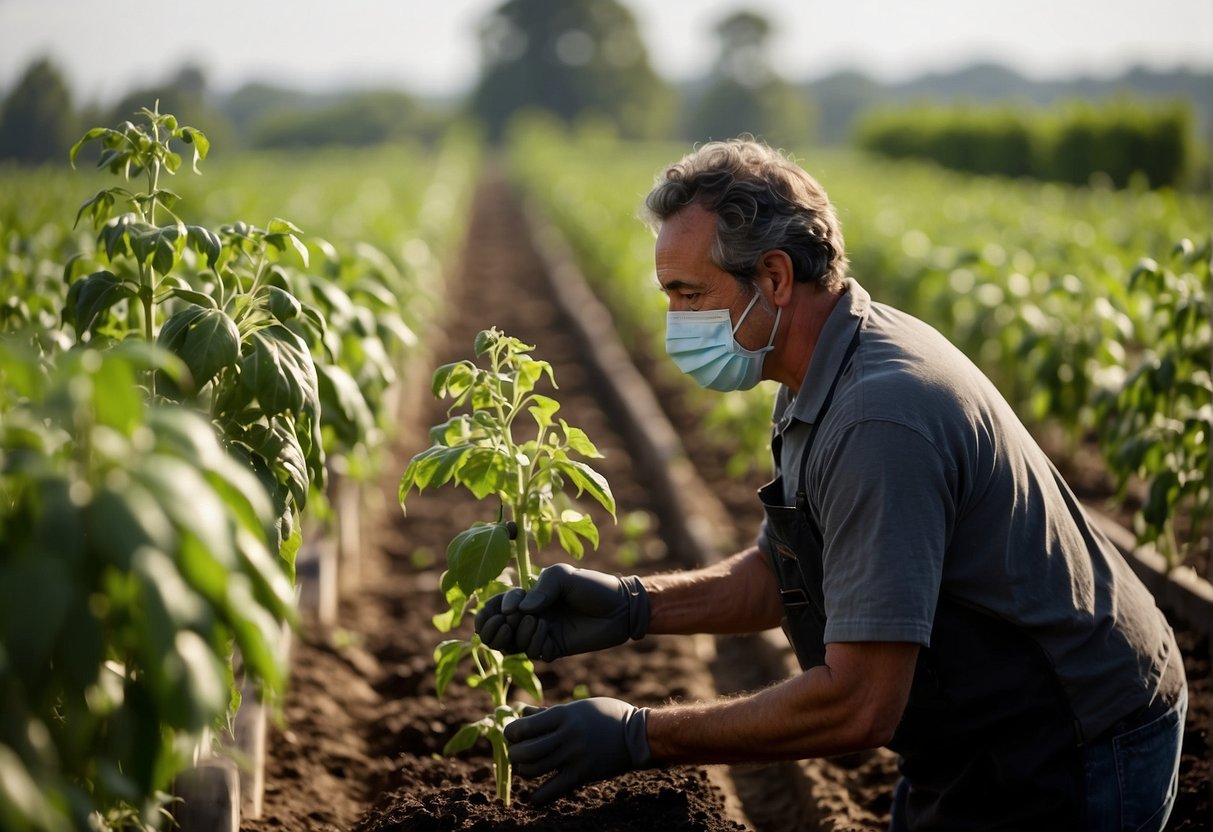
Common Tomato Pests and Control
Roma tomatoes, like any other tomato variety, are susceptible to different pests that can damage or even kill the plant. Aphids are one of the most common pests that affect tomatoes. These tiny insects feed on the sap of the plant, causing it to wilt and eventually die. To control aphids, gardeners can use insecticidal soaps or neem oil. These products are safe and effective in controlling aphids without harming beneficial insects.
Another pest that can cause problems for Roma tomatoes is the tomato hornworm. These large, green caterpillars can quickly defoliate a tomato plant. Gardeners can control tomato hornworms by handpicking them off the plant or using Bacillus thuringiensis (Bt), a naturally occurring bacteria that is toxic to caterpillars.
Diseases Affecting Tomatoes and Mitigation
Tomatoes are also susceptible to different diseases that can affect their growth and yield. Late blight is a fungal disease that can quickly spread and cause significant damage to tomato plants. To prevent late blight, gardeners should avoid overhead watering, which can spread the spores of the fungus. They can also apply fungicides, such as copper-based products, to protect their plants from the disease.
Verticillium wilt and Fusarium wilt are two soil-borne diseases that affect tomatoes. These diseases can cause the plant to wilt and eventually die. To prevent these diseases, gardeners should rotate their crops and avoid planting tomatoes in the same spot for at least three years. They can also use resistant tomato varieties that are less susceptible to these diseases.
Blossom end rot is a physiological disorder that affects tomatoes. It is caused by a calcium deficiency in the plant, which can be exacerbated by irregular watering. To prevent blossom end rot, gardeners should ensure that their plants receive consistent watering and apply a calcium-rich fertilizer to the soil.
By implementing proper pest management and disease prevention techniques, gardeners can ensure a healthy and bountiful harvest of Roma tomatoes.
Harvesting and Utilization

Optimal Harvesting Techniques
Determining when to harvest Roma tomatoes is crucial to ensure the highest quality and yield. As a determinate variety, Roma tomatoes typically ripen all at once, making it easier to harvest them. The ideal time to harvest Roma tomatoes is when they are fully red and firm to the touch. If they are picked too early, they may not ripen properly, while overripe tomatoes may become too soft and prone to damage.
To harvest Roma tomatoes, gently twist the fruit from the stem, being careful not to damage the plant or other fruits. Alternatively, use a sharp pair of scissors or pruning shears to cut the stem just above the fruit. This method is particularly useful when harvesting large quantities of tomatoes.
Preserving and Cooking with Roma Tomatoes
Roma tomatoes are a popular choice for making sauces, pastes, and canning due to their meaty texture and low water content. To preserve Roma tomatoes, they can be canned, frozen, or dried. Canning is a popular method for preserving tomatoes, as it allows them to be stored for longer periods without losing their flavor or texture.
To make a simple tomato sauce with Roma tomatoes, start by washing and removing the stems from the tomatoes. Cut the tomatoes in half and remove the seeds and pulp. In a large pot, sauté garlic and onions in olive oil until they are translucent. Add the tomatoes and season with salt, pepper, and dried herbs such as basil, oregano, or thyme. Simmer the sauce for 30-40 minutes until it thickens, stirring occasionally.
Another popular way to use Roma tomatoes is to make a paste or concentrate. To make a tomato paste, start by washing and removing the stems from the tomatoes. Cut the tomatoes in half and remove the seeds and pulp. In a large pot, simmer the tomatoes over low heat until they break down and thicken, stirring occasionally. Once the mixture has thickened, transfer it to a blender or food processor and puree until smooth. Spread the puree on a baking sheet and dry it in the oven at a low temperature until it becomes a thick paste.
Overall, Roma tomatoes are a versatile and flavorful variety that can be used in a variety of dishes. Whether making sauces, pastes, or canning, optimal harvesting techniques and proper preservation methods are essential to ensure the best results.
Frequently Asked Questions
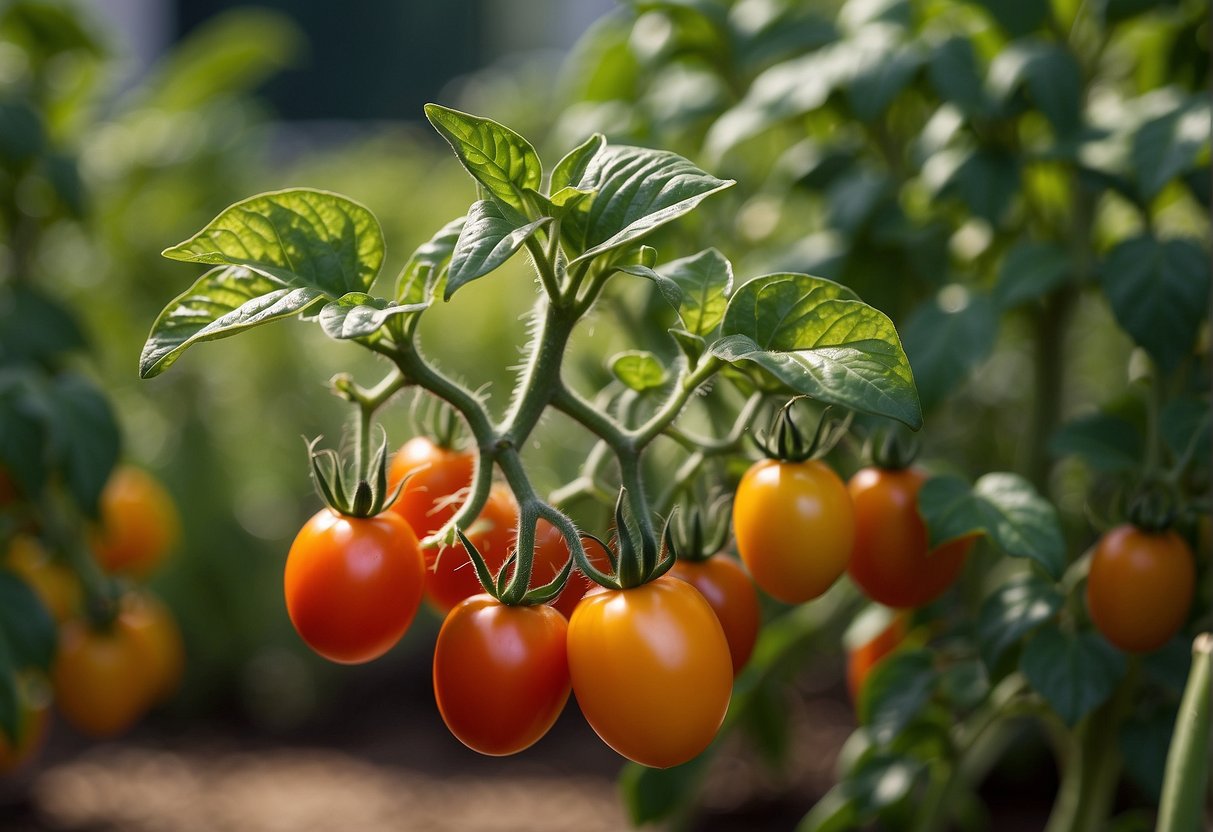
What distinguishes determinate from indeterminate tomato plants?
Determinate tomato plants, such as Roma tomatoes, grow to a certain height and then stop growing. They tend to be bushier and more compact, making them ideal for container gardening. Indeterminate tomato plants, on the other hand, continue to grow and produce fruit throughout the growing season. They require more space and support, such as staking or trellising, to prevent them from sprawling.
Are Roma tomatoes suitable for container gardening, and how should they be cared for?
Yes, Roma tomatoes are ideal for container gardening due to their compact size. They require well-draining soil, regular watering, and full sun exposure. It is important to provide them with support, such as a tomato cage or stake, to prevent the plant from bending or breaking under the weight of the fruit.
What are the best practices for pruning determinate tomato varieties like Roma?
Determinate tomato plants do not require extensive pruning. However, it is recommended to remove the suckers (small shoots that grow between the main stem and branches) to promote air circulation and prevent disease. It is also important to remove any yellow or diseased leaves to keep the plant healthy.
How can I identify whether a tomato plant is determinate or indeterminate?
The easiest way to identify whether a tomato plant is determinate or indeterminate is to check its growth habit. If the plant grows to a certain height and then stops growing, it is likely a determinate variety. If the plant continues to grow and produce fruit throughout the growing season, it is likely an indeterminate variety.
Do Roma tomato plants require staking or trellising for optimal growth?
Roma tomato plants do not require staking or trellising for optimal growth. However, providing support can help prevent the plant from bending or breaking under the weight of the fruit. It can also help promote air circulation and prevent disease.
What is the expected growth height for Roma tomato plants?
Roma tomato plants typically grow to a height of 3-4 feet (0.9-1.2 meters). However, the actual height can vary depending on growing conditions and pruning practices.


